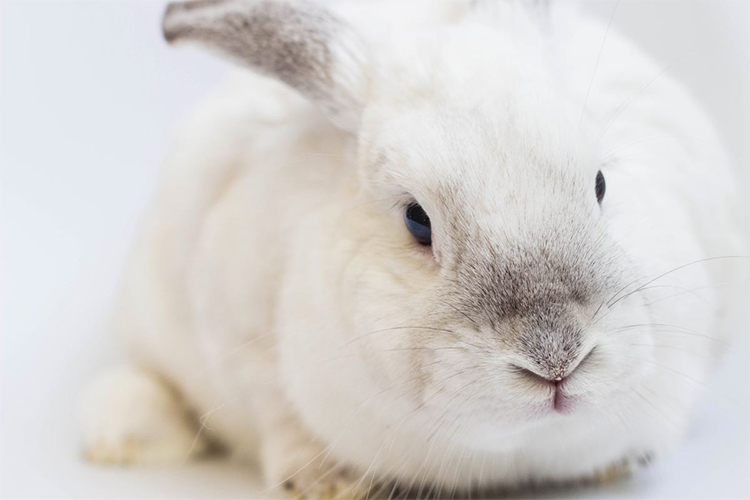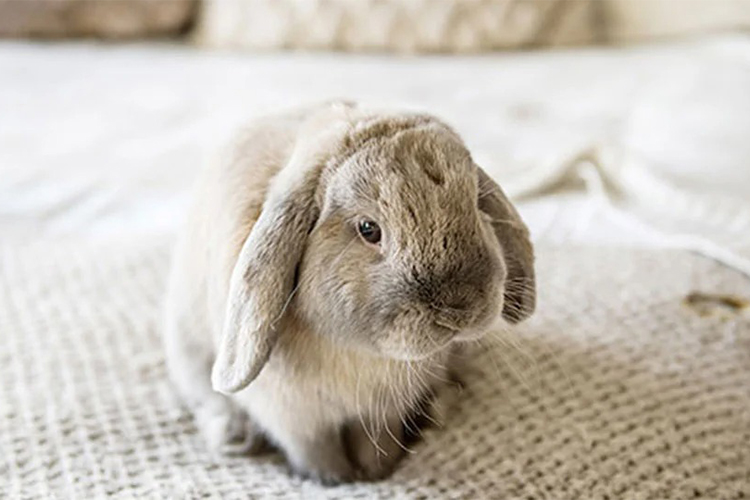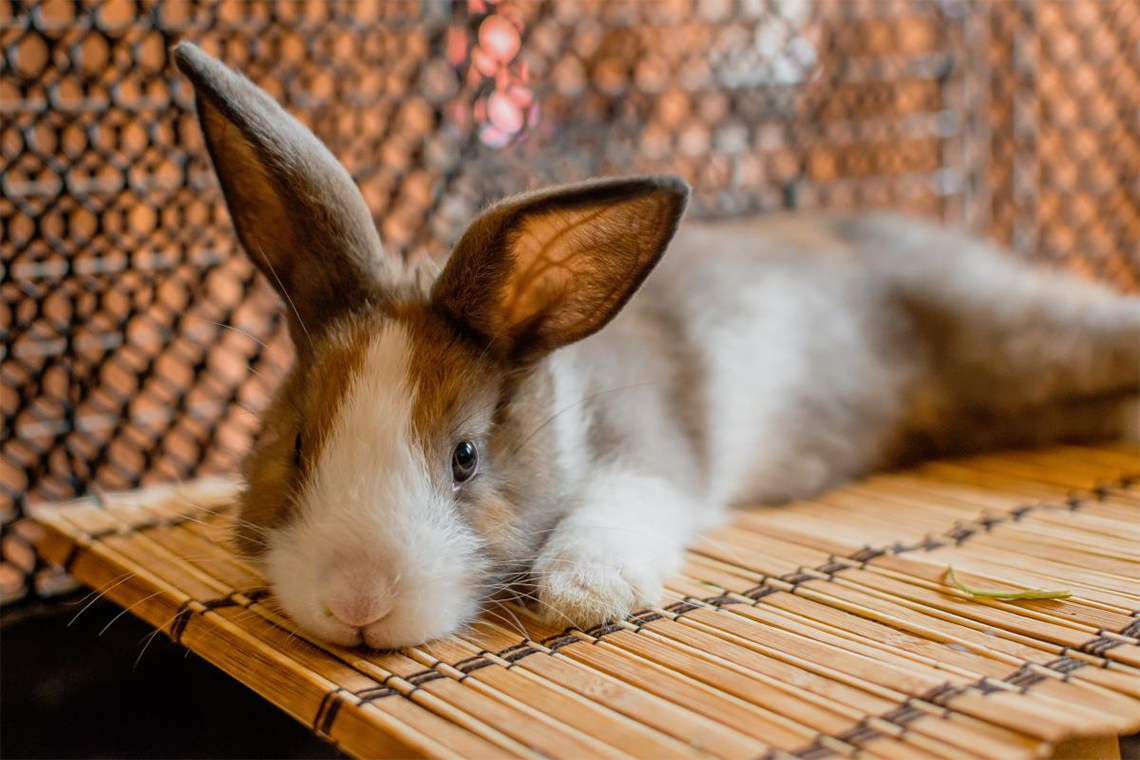Your Rabbit's Pain – Understanding the Signs and Finding Solutions
Rabbits are known for being cute and cuddly pets, but they are also prone to experiencing pain and discomfort just like any other animal. As a responsible rabbit owner, it is important to be able to recognize the signs of pain in your furry friend so that you can seek the appropriate veterinary care. In this blog post, we will discuss how to tell if your rabbit is in pain and what you can do to help alleviate their discomfort.

Signs of Pain in Rabbits
One of the biggest challenges in identifying pain in rabbits is that they are prey animals, which means they are hard-wired to hide their pain in order to avoid being targeted by predators. However, there are still some common signs that you can look out for:
- Changes in Eating and Drinking Habits
Rabbits are known for having big appetites, so if your rabbit suddenly loses interest in food or water, it could be a sign that they are in pain. Similarly, if your rabbit is eating or drinking less than usual, it could be a sign that they are experiencing discomfort.
- Changes in Activity Level
Rabbits are generally active animals, so if you notice a sudden decrease in your rabbit’s activity level, it could be a sign of pain. This could manifest as lethargy or reluctance to move around as much as usual.
- Hiding or Seeking Isolation
As prey animals, rabbits will often hide or seek isolation when they are in pain. If your rabbit is spending more time than usual in their hiding spot, it could be a sign that they are experiencing discomfort.
- Aggression
While rabbits are generally docile animals, they may become more aggressive if they are in pain. This could manifest as biting, scratching, or even growling.
- Changes in Posture or Mobility
If your rabbit is in pain, they may change their posture or mobility in order to avoid putting pressure on the affected area. For example, they may sit hunched up, or limp when walking.
- Teeth Grinding
Rabbits will often grind their teeth when they are in pain, so if you hear your rabbit making a grinding noise, it could be a sign that they are experiencing discomfort.
- Changes in Breathing
If your rabbit is in pain, they may breathe more rapidly or shallowly than usual. You may also notice that they are panting or wheezing.
- Changes in Coat Condition
If your rabbit is in pain, they may spend less time grooming themselves, which could lead to a dull or unkempt coat. Alternatively, they may over-groom themselves in an attempt to alleviate their discomfort.
- Changes in Bathroom Habits
Rabbits are known for being fastidious when it comes to their bathroom habits, so if your rabbit starts going to the bathroom outside of their litter box, it could be a sign that they are in pain.
What to Do if Your Rabbit Is in Pain
If you suspect that your rabbit is in pain, it is important to seek veterinary care as soon as possible. Rabbits are very good at hiding their pain, so by the time you notice symptoms, the pain may already be quite severe.
Your veterinarian will be able to conduct a thorough physical examination to determine the cause of your rabbit’s pain. Depending on the severity of the pain, they may prescribe pain medication or recommend other treatments such as surgery or physical therapy.
In addition to seeking veterinary care, there are a few things you can do at home to help alleviate your rabbit’s discomfort:
- Keep Your Rabbit Comfortable
Make sure your rabbit has a comfortable place to rest, with plenty of soft bedding to cushion any sore spots. You may also want to provide a heat pad or hot water bottle to help alleviate any pain.
- Administer Medications as Prescribed
If your veterinarian prescribes pain medication for your rabbit, make sure to follow their instructions carefully. Never give your rabbit human pain medication, as many of these medications are toxic to rabbits.
- Adjust Their Diet
In some cases, adjusting your rabbit’s diet may help alleviate their pain. For example, if your rabbit is experiencing gastrointestinal pain, your veterinarian may recommend switching to a diet that is high in fiber.
- Provide Gentle Exercise
Depending on the cause of your rabbit’s pain, gentle exercise may help alleviate their discomfort. Your veterinarian can advise you on what types of exercise are appropriate for your rabbit.
- Offer Plenty of Water
If your rabbit is experiencing pain, they may be reluctant to drink water. Make sure they have access to fresh, clean water at all times, and consider offering them water-rich foods such as cucumbers or lettuce.

Preventing Pain in Rabbits
While it is not always possible to prevent pain in rabbits, there are a few things you can do to help reduce the risk:
- Provide a Healthy Diet
A healthy diet is key to preventing many health issues in rabbits, including pain. Make sure your rabbit is eating a diet that is high in fiber and low in sugar.
- Keep Them Active
Regular exercise can help keep your rabbit’s muscles and joints healthy, reducing the risk of pain and discomfort. Consider providing your rabbit with toys and games that encourage them to be active.
- Regular Veterinary Check-Ups
Regular check-ups with your veterinarian can help catch health issues early, before they develop into more serious problems. Make sure your rabbit is seeing a veterinarian at least once a year for a check-up.
- Keep Their Living Space Clean
A clean living space can help prevent health issues such as infections, which can lead to pain and discomfort. Make sure your rabbit’s living space is cleaned regularly and is free of any potential hazards.
- Monitor Their Behavior
As a rabbit owner, it is important to keep an eye on your rabbit’s behavior and look out for any signs of pain or discomfort. If you notice anything out of the ordinary, seek veterinary care as soon as possible.
To Conclude
Pain in rabbits can be difficult to identify, but by looking out for common signs such as changes in eating and drinking habits, activity level, or posture, you can help ensure that your furry friend receives the appropriate veterinary care. Remember to always seek veterinary care if you suspect your rabbit is in pain, and to take steps to prevent pain and discomfort from occurring in the first place. With the right care and attention, you can help ensure that your rabbit lives a long, healthy, and pain-free life.












